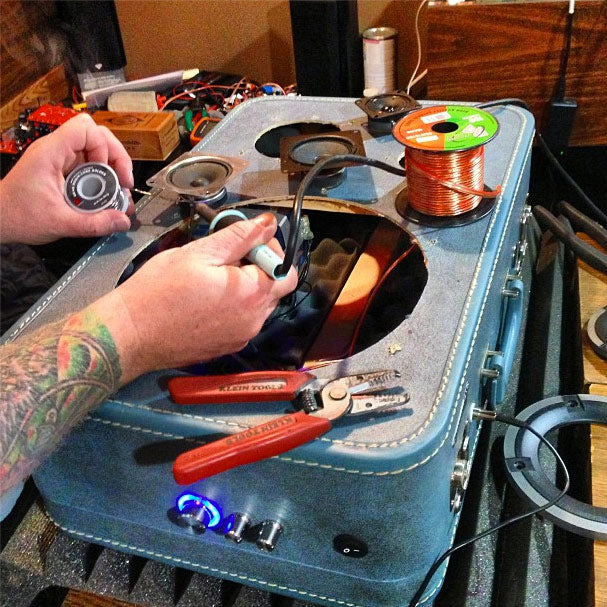- Continue Shopping
- Your Cart is Empty
Makers

Props to my good friend Eric for turning me on to Makers: The New Industrial Revolution by Chris Anderson of Wired fame. As it stands now, my trusty Kindle tells me I am 30% through the work, but I won't wait until the end to write something about it – as things are fresher in my mind if I report them as I go along. Fellow founders Russ and Javier are also working their way through it.
I have an eerie feeling reading this book; as if we here at CP are a small part of some much bigger movement. And thanks to Mr. Anderson I am convinced that the "Maker" movement truly exists and is not a bunch of overhyped puffery. I humbly submit that we are part of the movement. But I feel ignorant for not realizing that before I read Makers.
This particular excerpt certainly made me feel like a member of a community I had never heard of:
From tailored clothes to fancy restaurants, exclusivity has always commanded a premium.
This is what i.materialize, a design firm, calls "the power of the unique". In a world dominated by one-size-fits-all commodity goods, the way to stand out is to create products that serve individual needs not general ones.
So far, Chris has neglected to explain how challenging it can be to run a single business that offers "one-of-a-kind". But then again, in this passage he is speaking on a macro-level, for it has become easier than ever for willing entrepreneours to prototype and manufacture their own product. And, while he does mention the proliferation of "artisinal" style manufacturing, I would agree with him that one-of-a-kind becomes easier when your ideas are dreamed up in 3D and sent to routing and printing facilities. It seems all too easy to write off Mr. Anderson's zeal for 3D printing machines, since his company does that very thing. But I am convinced that he is right – in that the technology is already very servicable for prototyping and may advance ("sigh", via Moore's Law) to the mainstream consumer becoming as commonplace as its jetstream ancestor. In that sense, companies will offer unique items that don't have to be delivered via UPS, but can just be printed off the web.
Another place where we, as a company, identify with the Maker movement is that two of our founders are also web and software designers (not developers mind you), and have been in that profession for the past 15 years. We agree that we longed for a creative outlet of atoms rather than pixels – wanting very badly to make something "real". Well, we have started our journey in that regard with the Thumper Boombox, but I'm fairly certain that this is not where it will end. We simply cannot control the urge to create more things. According to Mr. Anderson the trend of digital designer switching to atoms is a major part of the Maker phenomena.
Two other small points of note so far:
1) I respect any author who quotes Richard Feynman, one of my personal heroes.
2) However, I assign Mr. Anderson a demerit for referencing Moore's Law, as I strongly feel that despite the merits of the theory , most of us have already heard of it and it has been beaten to death by now.
Anyhow, one of the benefits of writing this post as I sit 30% of the way through the book – is that I can end this discussion here and pick it up again later if necessary. More on this later (provided the book doesn't become repetitious)!
